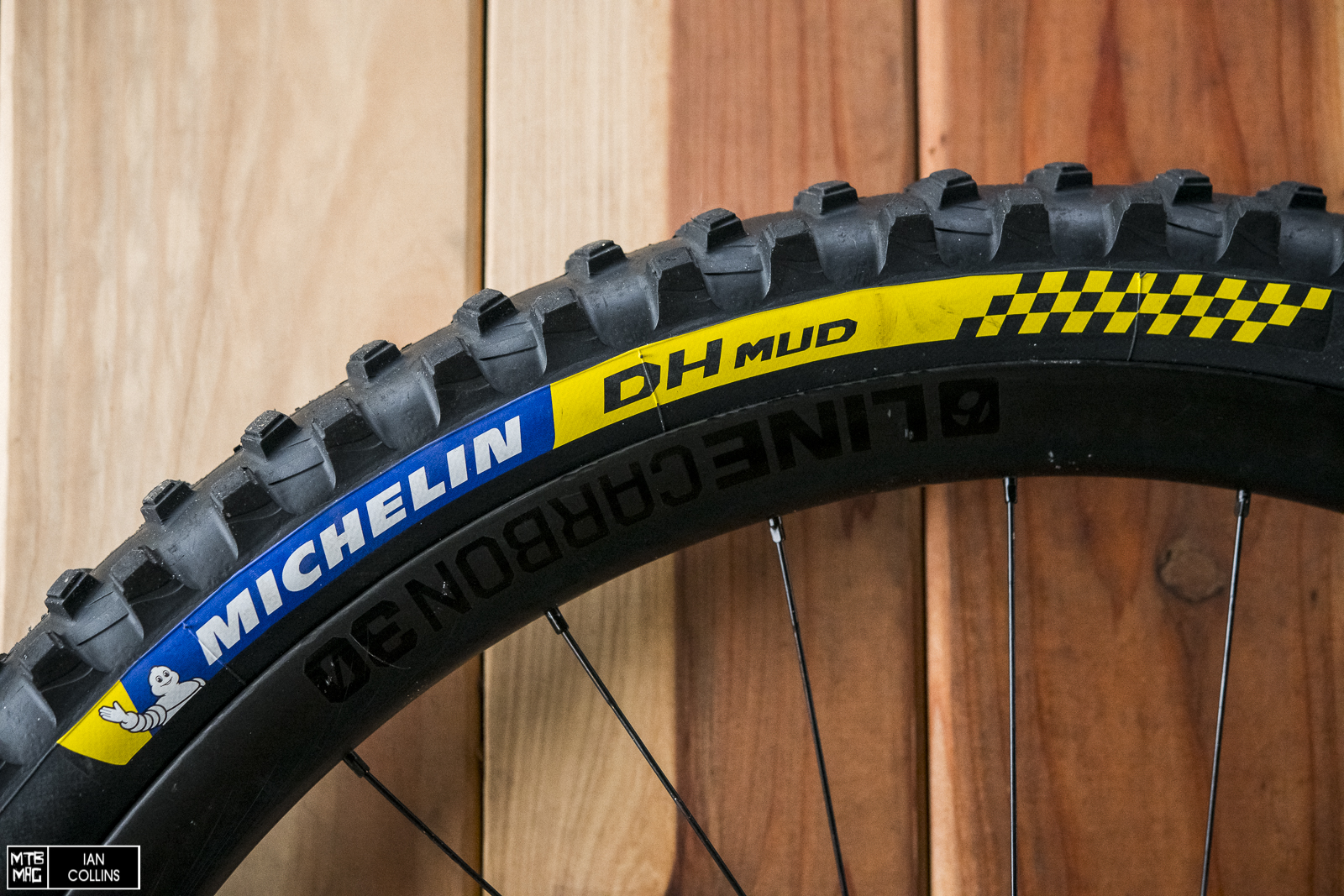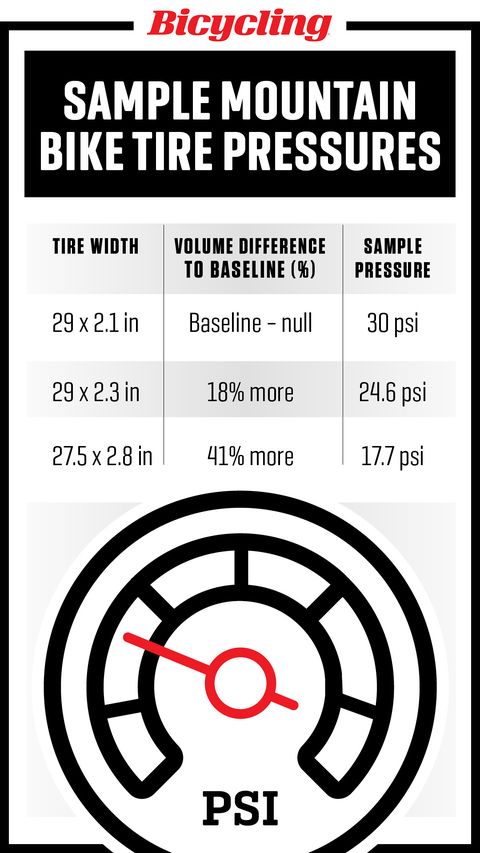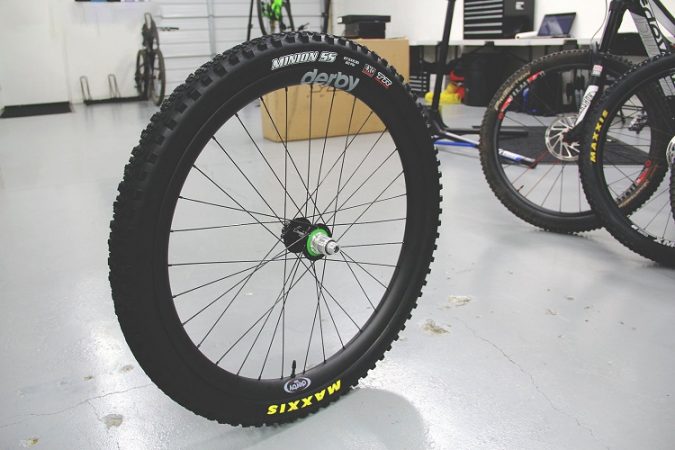Understanding the Factors that Influence MTB Tire Lifespan
Mountain bike tires, like any other cycling component, have a limited lifespan. The question “how long do mtb tires last?” is multifaceted and depends on several factors. To better understand tire longevity, consider the following elements: terrain, riding style, and tire construction. Each of these factors plays a crucial role in determining the overall durability of your mountain bike tires.
Firstly, terrain significantly impacts the lifespan of mountain bike tires. Riding on rocky trails, for instance, can lead to faster tire wear due to the abrasive nature of the terrain. Similarly, muddy paths can cause increased tire wear as a result of the additional rolling resistance and the need for more frequent tire cleaning. Smooth pavement, while seemingly gentle on tires, can still contribute to tire degradation over time due to continuous use and exposure to environmental factors.
Secondly, riding style is another essential factor to consider when evaluating mountain bike tire longevity. Aggressive cornering and braking can accelerate tire wear, reducing the overall lifespan of your tires. To maintain a balanced riding style that promotes tire longevity without compromising performance, focus on smooth cornering and braking techniques. This approach will not only help extend the life of your tires but also improve your overall riding experience.
Lastly, tire construction plays a significant role in determining how long mtb tires last. Selecting the appropriate mountain bike tires based on construction features like tread pattern, rubber compound, and casing is crucial. Popular tire brands like Maxxis, Schwalbe, and Continental offer durable and high-performance tires with various features tailored to different riding styles and terrain preferences. By understanding these factors and making informed decisions about your tire choices, you can maximize the lifespan of your mountain bike tires.
Terrain Considerations: How Different Surfaces Impact MTB Tire Durability
The relationship between terrain and tire longevity is an essential aspect of understanding how long mtb tires last. Different surfaces can significantly affect the lifespan of your mountain bike tires, as each terrain type contributes to tire wear and tear in unique ways.
Rocky trails, for instance, are notorious for their abrasive qualities. Riding on rocky terrain frequently can lead to rapid tire wear, as the sharp rocks and gravel constantly scrape against the tire’s rubber compound. This abrasion can cause noticeable tread wear and increase the risk of punctures or cuts in the tire sidewall. To mitigate these effects, consider using durable tires with reinforced sidewalls and robust tread patterns designed for rocky conditions.
Muddy paths, on the other hand, present a different set of challenges. The increased rolling resistance caused by muddy terrain can accelerate tire wear, especially if the tires are not regularly cleaned. Additionally, the accumulation of mud in the tire tread can add unnecessary weight, which can strain the tire casing and contribute to earlier failure. To combat these issues, look for tires with aggressive tread patterns and self-cleaning properties, which can help maintain traction and reduce tire strain.
Smooth pavement, while seemingly gentle on tires, can still contribute to tire degradation over time due to continuous use and exposure to environmental factors. Prolonged exposure to sunlight, for example, can cause the tire rubber to break down, leading to reduced tire resilience and increased susceptibility to punctures. To minimize these effects, store your bike in a shaded area when not in use, and consider using tires with UV-resistant rubber compounds.
In summary, the terrain significantly impacts the lifespan of mountain bike tires. By understanding how different surfaces affect tire durability, you can make informed decisions about tire selection and usage, ultimately extending the life of your mtb tires and maximizing your investment.
Riding Style: The Role of Aggressiveness and Technique in MTB Tire Longevity
A rider’s style significantly influences how long mtb tires last. Aggressive cornering, braking, and other riding techniques can contribute to faster tire wear, while a more balanced riding style can help extend tire life without compromising performance.
Aggressive cornering, for example, can lead to excessive tire sidewall flex, which can cause the tire to deform and wear prematurely. To maintain tire longevity while still enjoying aggressive cornering, consider using tires with reinforced sidewalls and tread patterns designed for enhanced cornering grip. Additionally, focusing on smooth and controlled cornering techniques can help reduce unnecessary tire stress and extend tire life.
Similarly, aggressive braking can strain the tire casing and contribute to tire wear. To minimize this effect, practice smooth and controlled braking techniques, avoiding sudden or excessive force on the brakes. This approach not only helps preserve tire longevity but also improves overall riding safety and control.
To promote tire longevity without compromising performance, consider the following tips:
- Maintain a consistent and balanced riding style, focusing on smooth and controlled techniques.
- Avoid sudden or excessive force on the brakes, and use both front and rear brakes evenly.
- Choose tires with reinforced sidewalls and tread patterns that suit your riding style and terrain preferences.
- Regularly inspect your tires for signs of wear, and replace them when necessary to ensure optimal performance and safety.
By understanding the impact of riding style on tire longevity, you can make informed decisions about your riding techniques and tire choices, ultimately extending the life of your mountain bike tires and maximizing your investment.
Tire Construction: Choosing the Right MTB Tires for Optimal Durability
Selecting the appropriate mountain bike tires based on construction features like tread pattern, rubber compound, and casing is crucial for ensuring how long mtb tires last. Various tire brands offer durable and high-performance tires tailored to different riding styles and terrain preferences. By understanding these construction features, you can make informed decisions about your tire choices and maximize tire longevity.
Tread Pattern
Tread patterns significantly impact tire performance and durability. Aggressive tread patterns, with large, widely spaced knobs, offer superior traction and grip on loose or technical terrain but may wear faster on smooth surfaces. Conversely, less aggressive tread patterns, with smaller, closely spaced knobs, provide better rolling efficiency and longevity on smooth or hard-packed trails but may compromise grip on loose terrain.
Rubber Compound
The rubber compound used in tire manufacturing plays a significant role in determining tire durability and grip. Softer rubber compounds offer superior traction and grip but wear faster, while harder rubber compounds provide longer-lasting durability but may sacrifice grip. Some tire brands, like Maxxis and Schwalbe, offer dual-compound or multi-compound tires, which combine different rubber compounds to balance grip, durability, and rolling efficiency.
Casing
The tire casing, which includes the tire’s sidewall and bead, affects tire durability, puncture resistance, and ride quality. Reinforced sidewalls provide additional protection against cuts and abrasions, while foldable beads, often found in higher-end tires, offer weight savings and easier transportation. Additionally, consider the tire’s carcass construction, as a higher thread count can contribute to increased puncture resistance and durability.
Popular Tire Brands and Offerings
Several tire brands are renowned for their durable and high-performance mountain bike tires. Some popular options include:
- Maxxis: Known for their diverse range of tires, Maxxis offers options like the Minion DHF, High Roller II, and Ardent, which cater to various riding styles and terrain preferences. Many Maxxis tires feature reinforced sidewalls and dual-compound rubber for enhanced durability and grip.
- Schwalbe: With offerings like the Hans Dampf, Magic Mary, and Nobby Nic, Schwalbe provides tires for a wide range of riding styles and terrain types. Schwalbe’s tires often feature multi-compound rubber and robust casings for increased durability and performance.
- Continental: Continental’s mountain bike tire lineup includes options like the Mountain King, X-King, and Race King, which cater to cross-country, trail, and enduro riders. Continental tires often feature a high-quality rubber compound and reinforced sidewalls for increased durability and longevity.
By considering these construction features and popular tire brands, you can choose the right mountain bike tires for optimal durability and performance, ultimately extending the life of your tires and maximizing your investment.
How to Prolong the Life of Your Mountain Bike Tires: Maintenance Tips and Tricks
Proper maintenance is essential for maximizing how long mtb tires last and ensuring optimal performance throughout their lifespan. By following these practical tips and tricks, you can extend the life of your mountain bike tires, save money, and enjoy a safer, more enjoyable riding experience.
Proper Tire Inflation
Maintaining the correct tire pressure is crucial for preserving tire longevity. Underinflated tires can lead to increased rolling resistance, uneven tire wear, and a higher risk of punctures. Overinflated tires, on the other hand, may suffer from reduced traction, impact damage, and a harsher ride. Regularly check your tire pressure and inflate your tires to the manufacturer’s recommended pressure, which is often found on the tire’s sidewall.
Regular Tire Inspections
Routinely inspect your tires for signs of wear, damage, or debris. Remove any embedded objects, like thorns or glass, and check for cuts, abrasions, or punctures. Addressing these issues promptly can help prevent further damage and extend the life of your tires.
Basic Tire Care Techniques
Implementing basic tire care techniques can significantly impact tire longevity. After each ride, clean your tires by removing mud, debris, or other contaminants. This practice not only helps maintain tire performance but also prevents the buildup of harmful substances that can degrade the tire rubber over time.
Proactive Maintenance
Emphasize proactive maintenance to maximize tire longevity. Periodically inspect your tires for signs of aging, such as cracking or hardening of the rubber compound. If you notice any of these warning signs, consider replacing your tires to ensure your safety and maintain optimal performance.
By following these maintenance tips and tricks, you can extend the life of your mountain bike tires, preserve their performance, and ensure a safer, more enjoyable riding experience. Remember that proper tire care is an essential aspect of responsible cycling, and investing time and effort in tire maintenance can lead to significant long-term benefits.
Recognizing the Signs of Worn-Out MTB Tires: When to Replace Your Rubber
Understanding when to replace your mountain bike tires is crucial for maintaining optimal performance and ensuring your safety on the trails. By familiarizing yourself with the warning signs of worn-out tires, you can determine the right time to invest in a new set of rubber, ultimately maximizing how long mtb tires last and enhancing your overall riding experience.
Reduced Traction
One of the most apparent signs of worn-out mountain bike tires is reduced traction. As tires age and tread patterns wear down, they lose their ability to grip the terrain effectively. This reduced traction can lead to unstable handling, compromised control, and an increased risk of accidents. If you notice that your tires are struggling to maintain grip, especially on loose or slippery surfaces, it may be time to consider a replacement.
Increased Puncture Risk
Worn-out tires are more susceptible to punctures and other forms of damage. As the tire rubber wears down, it loses its resilience and becomes more prone to tearing or splitting. Additionally, thin or worn-down tire sidewalls may be more susceptible to cuts and abrasions from sharp objects or aggressive terrain. If you find yourself frequently repairing punctures or dealing with tire damage, it may be time to replace your tires.
Visible Tread Wear
Visual inspection of your tires can provide valuable insights into their condition. Regularly examine your tires for visible signs of tread wear, such as shallow or smooth tread patterns. If the tread depth is significantly reduced or the tire tread is no longer visible, it may be time to replace your tires. Many mountain bike tires have wear indicators molded into the tread, which can help you assess tire condition and determine when a replacement is necessary.
Assessing Tire Condition
To assess the overall condition of your mountain bike tires, follow these steps:
- Inspect the tires for visible signs of wear, such as shallow tread patterns or cuts in the tire rubber.
- Check tire sidewalls for signs of damage, like splitting, cracking, or abrasions.
- Examine the tires for embedded objects, like thorns or glass, and remove them carefully.
- Squeeze the tire sidewalls gently to check for any loss of resilience or excessive softness, which may indicate tire aging or damage.
- Spin the tires while they are mounted on the bike to check for wobbling or other signs of mechanical issues that may affect tire performance and longevity.
By regularly assessing your tire condition and recognizing the warning signs of worn-out tires, you can ensure that your mountain bike tires are always in optimal condition, maximizing their lifespan and enhancing your riding experience.
Selecting the Ideal Replacement MTB Tires: Balancing Durability and Performance
Choosing the best replacement mountain bike tires involves considering several factors, including riding style, terrain preferences, and desired tire lifespan. By carefully evaluating these elements, you can find durable and high-performance tire options that meet your needs and budget. This section offers recommendations for durable and high-quality mountain bike tires across various price points, ensuring that you can make an informed decision when it’s time to replace your worn-out rubber.
Budget-Friendly Options
For riders seeking affordable yet reliable replacement tires, consider options like the Schwalbe Smart Sam or the Kenda Small Block Eight. These budget-friendly tires offer good durability and versatile performance, making them suitable for various terrain types and riding styles. They may not provide the same level of grip or puncture resistance as higher-end tires, but they offer excellent value for their price.
Mid-Range Options
Mid-range mountain bike tires, such as the Maxxis Ardent or the WTB Trail Boss, offer a balance between durability, performance, and cost. These tires often feature more advanced tread patterns, rubber compounds, and reinforced sidewalls, providing improved traction, puncture resistance, and durability compared to budget options. They are suitable for a wide range of terrain types and riding styles, making them a popular choice for many riders.
Premium Options
High-end mountain bike tires, like the Maxxis Minion DHF or the Schwalbe Magic Mary, offer superior performance, durability, and puncture resistance. These tires often feature advanced tread patterns, multi-compound rubber, and reinforced casings, ensuring excellent grip, traction, and longevity. While they come with a higher price tag, their exceptional performance and durability make them a worthwhile investment for serious riders and competitive cyclists.
When selecting replacement mountain bike tires, consider the following factors:
- Riding style: Choose tires that cater to your specific riding style, whether it’s cross-country, trail, enduro, or downhill.
- Terrain preferences: Opt for tires that excel on the terrain types you frequently encounter, such as rocky trails, muddy paths, or smooth pavement.
- Desired tire lifespan: Balance durability and performance to find tires that meet your expectations for longevity without compromising on ride quality.
By carefully considering these factors and selecting the ideal replacement tires, you can ensure optimal performance, longevity, and value for your investment. Remember that responsible tire usage and proper maintenance techniques will further extend the life of your new mountain bike tires, providing you with countless hours of safe and enjoyable riding experiences.
Maximizing Your Investment: Strategies for Caring for Your New MTB Tires
Properly maintaining your new mountain bike tires is essential for ensuring their longevity and maximizing your investment. By following these strategies for caring for your new tires, you can extend their lifespan, maintain optimal performance, and enjoy safe and enjoyable rides. This section offers suggestions for storing, rotating, and protecting your new mountain bike tires, as well as responsible usage tips to ensure the best possible return on investment.
Proper Storage
Storing your mountain bike tires in a cool, dry, and dark environment can help prevent premature aging and degradation. Exposure to sunlight, extreme temperatures, and moisture can negatively impact tire rubber, causing it to crack, harden, or lose resilience. When storing your bike, consider using tire covers or storing your bike in a climate-controlled space to protect your tires from environmental factors.
Regular Tire Rotations
Rotating your mountain bike tires regularly can help distribute wear evenly and prolong their lifespan. While not as critical as rotating car tires, swapping the front and rear tires periodically can help ensure that both tires wear at a similar rate, reducing the likelihood of uneven tread wear or bald spots. Aim to rotate your tires every 3 to 6 months, depending on your riding frequency and conditions.
Avoiding Damage During Transportation
Protecting your tires during transportation is crucial for preventing damage and extending their lifespan. When transporting your bike, use a high-quality bike rack or transport case to secure your bike and prevent it from shifting or moving during transit. Additionally, consider using tire protectors or foam inserts to safeguard your tires from sharp objects, debris, or other potential hazards that could cause cuts, abrasions, or punctures.
Responsible Tire Usage
Adopting responsible tire usage habits can significantly impact the lifespan of your new mountain bike tires. Follow these tips to ensure that you’re using your tires responsibly and maximizing their longevity:
- Avoid overloading your bike, as excessive weight can cause premature tire wear and damage.
- Check tire pressure regularly and maintain the recommended inflation levels to prevent uneven wear and reduce the risk of punctures.
- Clean your tires after each ride to remove mud, debris, or other contaminants that could degrade the tire rubber or cause damage.
- Inspect your tires for signs of wear, damage, or debris before each ride and address any issues promptly to prevent further damage or tire failure.
By following these strategies for caring for your new mountain bike tires, you can maximize their lifespan, maintain optimal performance, and ensure a safe and enjoyable riding experience. Remember that responsible tire usage, proper maintenance, and proactive care are essential for getting the most out of your investment in high-quality mountain bike tires.







